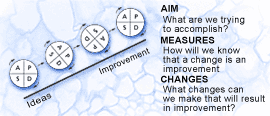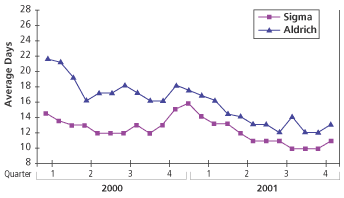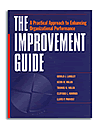 |
|||
 |
 |
| Click here for details on Fine Chemicals Increasing Sales |
|
|
Sigma-Aldrich has a passion for process improvement. Our aims are to look for new and better ways to serve our customers and substantially reduce operating costs.
Process improvement, over the past five years, has become an integral part of our culture and a tremendous success story. Above all, we're looking for improved ways to serve our customers and consequently increase the demand for our Life Science and High Technology products. Furthermore, by developing more efficient processes, we can also reduce costs. This is an area where everyone in the Company worldwide can contribute to improving our performance. Well, what is process improvement? It's a methodology for testing and implementing changes - changes that will result in improvement. As most of us know, from our business or private life, not all change is an improvement. So it's important to make the right changes. At its simplest level, “Low Hanging Fruit,” we're talking about using common sense ways to save money that produce immediate results. Such improvements are often a matter of doing the obvious. And no savings is too small to be addressed. At Sigma-Aldrich, we aim to spend the Company's money as carefully as we would our own! In comparison, our “High Hanging Fruit” projects require fundamental changes that produce substantial improvements. These projects often require teamwork across business divisions and country boundaries. In many cases the goal is often to transfer knowledge gained at one location to another.
The model we're using to implement major change is one of "trial and learning", the principles of which are outlined in The Improvement Guide, co-authored by our long-time consultant and advisor Tom Nolan, the 2000 recipient of the prestigious Deming Medal from the American Society for Quality. First we define our aim - what we are trying to accomplish? Next we determine measures - how will we know that a change is an improvement? And finally we consider possible changes that will result in an improvement. Then we test with a PDSA cycle (Plan, Do, Study, Act). Using this approach, our initiatives have already resulted in substantial accumulated savings of about $25 million. If we use our formula $1 saved = $5 sales, that is equivalent to roughly sales of $125 million. These savings have made it possible for us to make major investments in new systems (SAP computer software and the Internet), additional R&D facilities and researchers and an expanded sales and marketing force.
Initially our key improvements were in operations, but now there are PDSA's going in almost all departments. We've launched major worldwide initiatives in production, purchasing, packaging, labeling and distribution, all of which will help us improve service and better manage inventory. Regarding production, our First Pass initiative (reduce batch failures) has met with great success. This certainly helps our profitability. We're also using an even more sophisticated statistical approach to determine the optimum composition of our Cell Culture products i.e. to give the best cell growth and to design R&D projects.
Bearing in mind that we purchase over $250 million in chemicals and supplies every year, the potential here for cost savings is enormous. And, we intend to get them. This is in fact a very complex project for we have so many products and purchasing in so many countries. Packaging using "work cell" concepts coupled with better scheduling has not only increased productivity but has substantially reduced cycle times, resulting in the lowest levels of backorders worldwide in recent history. This really helps research sales. Our Fine Chemicals division has produced equally impressive packaging results. Not only were cycle times reduced and the percentage of orders shipped on time increased, but lead times quoted to customers were also reduced from five days to three days. No doubt this accounts for part of the exceptional 2001 Fine Chemicals sales growth in 2001. And, there's still plenty of room for further improvement.
The worldwide Label on Demand project will help Sigma-Aldrich improve customer service, reduce back- orders, increase plant utilization and control inventory because all product labels will be available wherever Sigma-Aldrich material is located.
Distribution continues to be a focus for process improvement. And, in 2001, we considerably reduced distribution cycle times to our subsidiaries and customers outside the USA. This certainly helped our international sales which grew twice as fast as in the USA. All these major projects will help us to reduce our level of inventory. There were also numerous local initiatives which we expect to further increase as we intensify our efforts. Process improvement has already changed the way we do business at Sigma-Aldrich and will play an even more important role in the future. Clearly, process improvement takes out tremendous costs, improves our service and above all helps maintain our leadership in Life Science and High Technology. |
|||||||||||||||
|
© 2002 Sigma-Aldrich Co. Sigma-Aldrich brand products are sold exclusively through Sigma-Aldrich, Inc. |
|||||||||||||||








